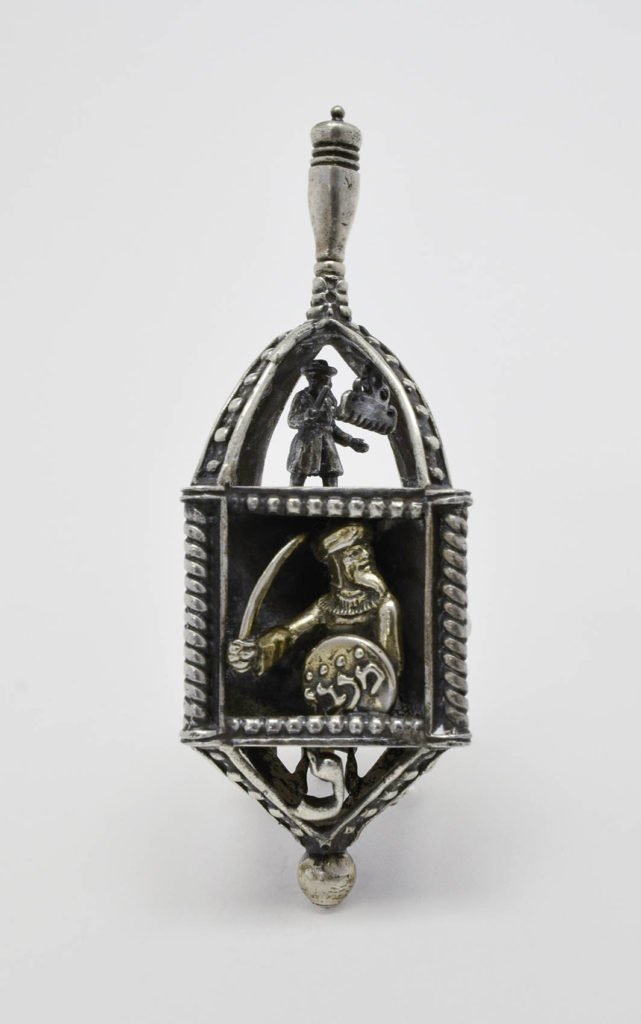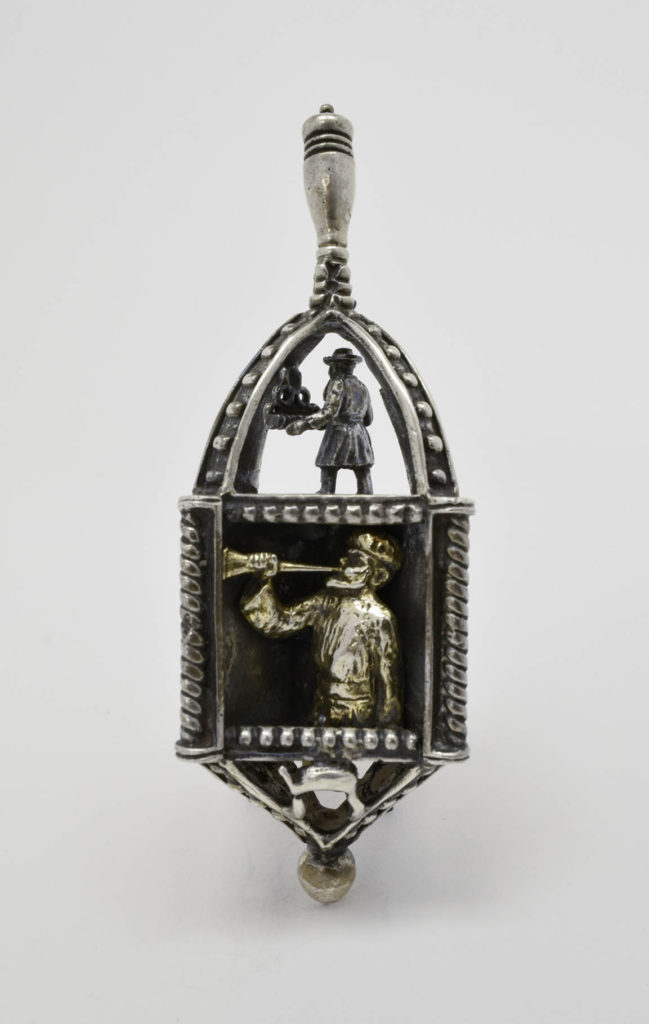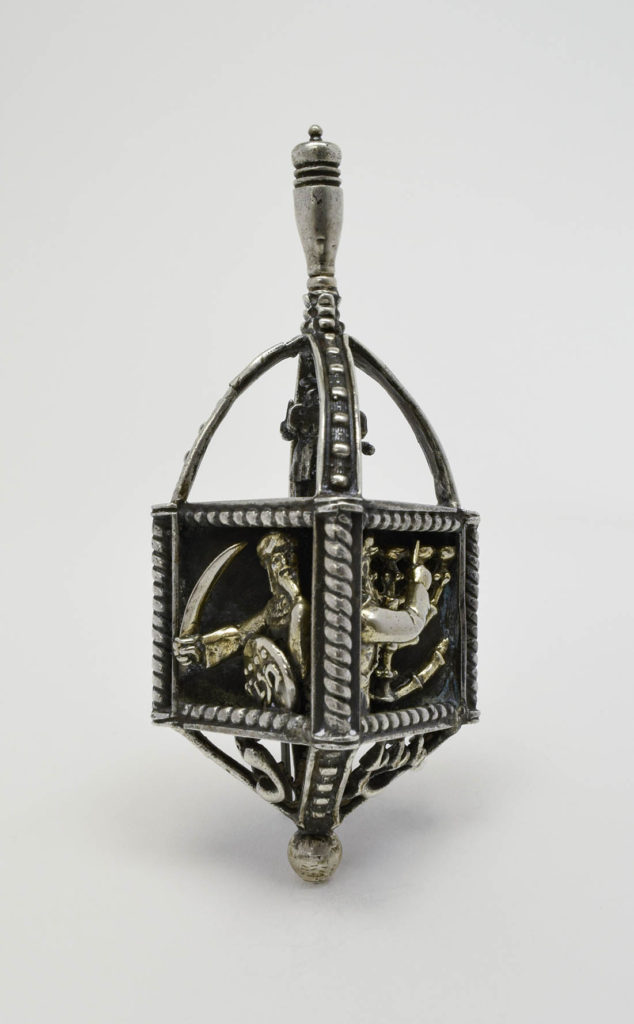Dreidel (Top)
Peter Ehrenthal (1920-2022)
USA, 1960
Cast silver, 4 5/32 x 1 25/64 x 1 25/64”
B’nai B’rith Klutznick National Jewish Museum Collection, gift of Joseph and Olyn Horwitz, 1980, 2015.17.427
The Jewish festival of Hanukkah commemorates the miraculous military victory in 165 BCE of a
small number of Jews, led by Judah Maccabee, over the oppressive ruling Syrian-Greek
government, which had commanded the Jews to worship only Greek idols under penalty of
death.
During Hanukkah, children play a game of chance developed in medieval times using a dreidel,
a four-sided top. Each side of the dreidel has a Hebrew letter on it, נ ג ה שׁ, nun, gimel, hay, and
shin, which stand for the Hebrew words that mean “a great miracle happened there.” Players
begin with an equal number of tokens and place one in the center. They take turns spinning the
dreidel and put in tokens, remove tokens, or do nothing depending on which side of the four
sides the dreidel lands. The last player with tokens wins the game. Dreidel is Yiddish; sevivon is
the Hebrew word for “top.” Israeli dreidels have the letters for “a great miracle happened here.”
This dreidel is strictly decorative—you can’t really spin it. It has three tiers—the top tier depicts
a bearded man lighting a hanging hanukkiah, or Hanukkah lamp; the second tier shows four
different vignettes: one is a figure of Judah Maccabee holding a sword and a shield, next is a
man in a turban lighting a large, branched hanukkiah, a man blowing a horn, and finally a motif
of Judith holding the head of Holofernes. Judith, the biblical heroine, beheaded Holofernes, a
Babylonian general, while he slept. The story of Judith, a beautiful widow who rescues her
people from invaders by enticing, then decapitating Holofernes, an enemy general, is found in
the Apocrypha. The story encourages Jewish people in their struggle for liberty and the story
particularly resonates at Hanukkah. The Book of Judith, like 1 and 2 Maccabees, never entered
the canon of the Hebrew Bible. It was written between the second century BCE and the first
century CE. Midrashic literature claims Judith to be a member of the Maccabee family, and
since medieval times this book has been associated with Hanukkah. Judith’s story was also
popular in Renaissance art—her victory over a powerful enemy made her a symbol of moral
virtue and civic strength with whom the citizens of the Florentine city-state identified. Florence,
like Judith, had successfully preserved its autonomy against adversaries. The third tier shows
the four Hebrew letters, נ ג ה שׁ.
Ehrenthal emigrated from Romania to Israel, and eventually settled in New York. He was a
silversmith, and a collector of Judaica, and owned Moriah Galleries based in New York City,
which was in business from 1957 to 2015.




